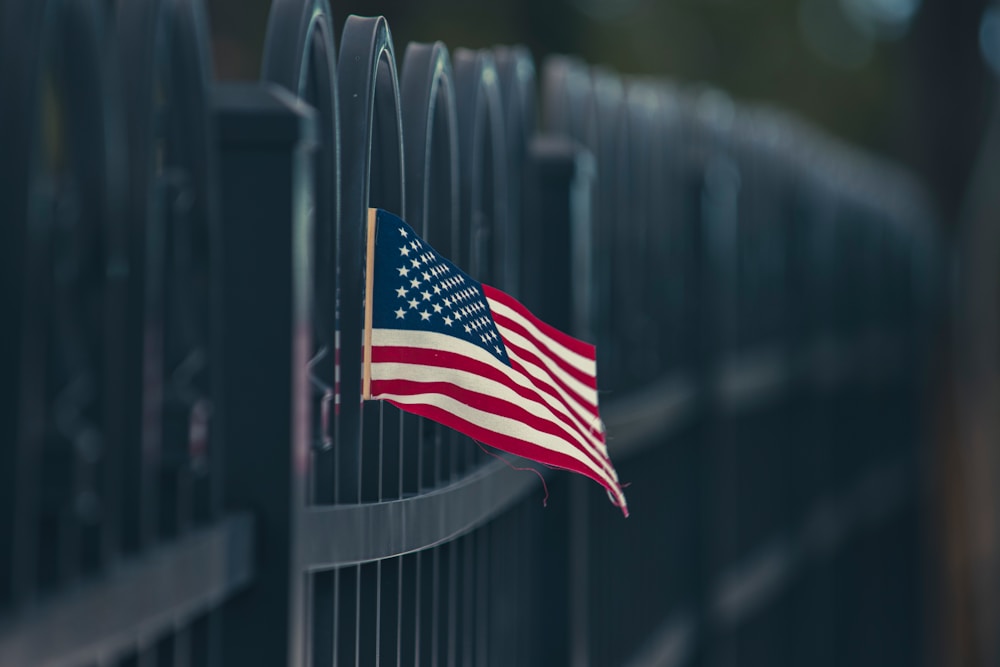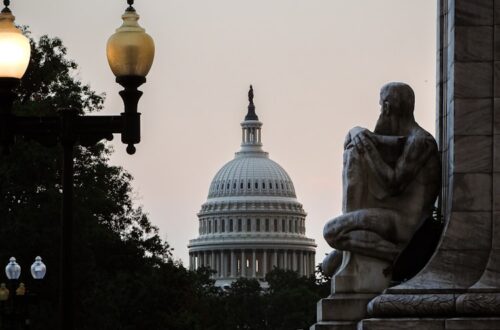The news arrived with the weight of a thundercloud that never quite breaks. It rolled across the country in headlines and alerts, leaving many of us pausing for a moment just to absorb what it meant. Former President Donald Trump issued pardons for Rudy Giuliani, Mark Meadows and several allies involved in attempts to overturn the 2020 election. Yet the twist sat right in the center of the story: the pardons hold no legal force. Not for any of them.
In other words, this wasn’t a legal earthquake. It was a symbolic gesture. But symbols have their own gravity. And this one landed with enough force to stir old debates, revive long-settled tensions and remind the country that the debates of 2020 still cling to the edges of our political landscape.
So let’s walk through this moment together. We’ll move slowly. Clearly. In a way that helps all of us understand what happened and why the symbolism is as important as the act itself. After more than five years of court battles, political rifts and shifting narratives, it helps to lay everything out in steady lines instead of scattered pieces.
The Announcement That Set Everything in Motion
When Trump issued the pardons, he named Giuliani, Meadows and several false electors. These individuals were accused of playing roles in efforts to deny, shift or overturn the result of the 2020 presidential election. For many Americans, these names remained tied to the most turbulent post-election period in recent memory.
But here’s the key part: all of them were charged at the state level. Pardons from a president only cover federal charges. That means the clemency does not change their legal status. It does not shield them. It does not erase any indictments. It does not stop state proceedings.
Instead of legal protection, the move offers political protection. Or at least political messaging.
After more than one presidency filled with controversial pardons, Trump leaned into the symbolic power of the gesture rather than the legal effect of it. And that choice matters because it tells us what the act was designed to accomplish.
Why Rudy Giuliani’s Pardon Stood Out
Rudy Giuliani has been at the center of the post-election storm since the final ballots were counted. His press conferences. His legal filings. His claims. His presence became part of the national memory of 2020.
A presidential pardon, even a symbolic one, carries emotional weight for someone who was once one of the most recognizable public figures in America. But the symbolism works both ways.
Giuliani’s legal battles continue at the state level, unaffected by Trump’s proclamation. The pardon doesn’t stop the charges. It doesn’t erase the accusations. It doesn’t shift the legal terrain ahead of him.
But most of all, it signals loyalty. Trump extending clemency to Giuliani doesn’t fix anything in the courthouse, but it reinforces a message about who stands with whom on the political landscape.
Mark Meadows and the Language of “Grave National Injustice”
Mark Meadows’ pardon came with a proclamation that promised to “end a grave national injustice.” The phrasing was deliberate. It framed Meadows not as a participant in wrongdoing, but as a target of unfair treatment. That framing was as political as it was rhetorical.
But here’s the truth behind the headline: state prosecutors charged Meadows with crimes that fall outside the reach of a federal pardon. So the gesture changes nothing. The cases proceed. The prosecutors move forward. The courts continue their work.
Instead of a legal shield, Meadows received a message of solidarity.
In other words, the proclamation spoke to a political audience, not a courtroom.
The False Electors and the Broader Meaning of Symbolic Clemency
The group of false electors included in the pardons faced accusations of trying to interfere with the certification of Joe Biden’s victory. Some argued they were following political strategy. Others said they were pushing an unlawful attempt to manipulate the outcome. State charges were filed in several jurisdictions.
By including them in the clemency sweep, Trump extended political recognition to individuals who have become symbolic in the ongoing debate over election integrity. The gesture placed them in the same category of loyalty and shared cause as Giuliani and Meadows.
But again, the pardon has no legal force. States hold their own authority. And their cases continue without interruption.
Instead of changing their future, this pardon tied their stories more tightly to Trump’s own narrative.
Understanding Symbolic Pardons in a Legal System That Limits Them
To understand why these pardons matter even without legal effect, it helps to step back and look at the boundaries of presidential clemency. A president can only pardon federal crimes. State charges remain untouched. This structure is part of how the United States balances national and local authority.
Trump’s decision to issue pardons that cannot alter the legal fate of the individuals involved highlights something deeper: the gesture was aimed at public perception, not courtroom outcomes.
Instead of shielding his allies, he signaled allegiance.
Instead of stopping prosecutions, he offered a public defense.
Instead of shifting the legal landscape, he shifted the political one.
And in the world of political symbolism, that kind of gesture can reverberate far beyond the courthouse steps.
How This Moment Echoes the Past
We’ve seen symbolic pardons before. They appear in moments when a political figure wants to make a statement more than a legal change. But Trump’s use of pardon power, both during and after his presidency, has followed a pattern: reward loyalty, challenge opponents and frame allies as victims of injustice.
This most recent round fits seamlessly into that pattern. Yet it stands apart because the timing, language and subjects involved all point toward a broader strategy tied to shaping public understanding of the 2020 election’s aftermath.
After more than five years of continued debate, the symbolism still carries heat.
What This Means for the Individuals Involved
For Giuliani, Meadows and the false electors, these pardons do not erase any charges. They do not end their trials. They do not prevent convictions. Their futures still rest with state courts, state juries and state prosecutors.
But the pardons do reshape the political story around them. They provide a new talking point. They allow these individuals to frame themselves not just as defendants, but as political allies recognized by a former president.
Instead of legal relief, they receive narrative relief.
And narrative is powerful when the nation is divided.
The Public Response and the Emotional Pulse Behind It
Reactions across the country swung in predictable arcs, but the emotional tone underneath the headlines tells a deeper story. People felt frustration, vindication or fatigue depending on how they recall the events of 2020.
Some saw the pardons as a gesture of loyalty.
Others saw them as a political stunt.
Many saw them as an unnecessary return to a fight the country is still trying to heal from.
But most of all, the nation felt the familiar tug of a story that continues to reach into the present, long after the ballots were tallied.
Symbolic acts have a way of awakening old tensions. This one was no exception.
Why This Moment Matters Even Without Legal Weight
It’s easy to dismiss symbolic pardons as empty. But symbols affect how people understand events. They shape memory. They shape identity. They shape the story a nation tells itself about what happened and who stood where.
This moment matters because:
It reinforces ongoing divisions
The pardons draw a sharper line between two competing versions of recent history.
It signals Trump’s continued influence
Even without office, he uses presidential tools to frame public narrative.
It shows how political gestures can overshadow legal processes
The cases proceed, but the storytelling around them intensifies.
It reminds the country that unresolved tensions still simmer
The debates of 2020 may not dominate the headlines every day, but they remain embedded in the national fabric.
Instead of fading into the past, they continue to ripple into the future.
What to Watch Moving Forward
As the symbolic dust settles, the real movement will happen in state courts. The cases against Giuliani, Meadows and the false electors will move along procedural tracks that remain untouched by the pardons.
But the political impact will play out in other arenas:
Campaign messaging
Expect these pardons to appear in speeches and rallies as examples of loyalty and grievance.
Legal commentary
Analysts will continue to explain the limits of presidential power in the face of state authority.
Public debate
The conversation about election integrity, political accountability and the limits of clemency will gain new traction.
Instead of closing the door on past debates, the pardons opened a window to revisit them.
A Symbolic Stroke With Real-World Ripples
As the country absorbs Trump’s decision to pardon Giuliani, Meadows and the false electors, the feeling in the air is complicated. Not chaotic. Not calm. Something in between. The kind of feeling that comes when symbolic acts stir old memories and raise new questions, even when they change nothing in the courtroom.
These pardons won’t alter legal outcomes. They won’t shield anyone from state charges. They won’t rewrite the cases already underway. But they will shape how millions of people understand the story of the 2020 election and the people who fought to overturn it.
You and I have lived through enough political cycles to recognize that legal power and symbolic power rarely move on the same track. This moment shows how one can continue long after the other has reached its limit.
And as the nation keeps moving forward, these symbolic gestures remain part of the broader tapestry of how we understand our recent past, our present tensions and the long road that still stretches ahead.





